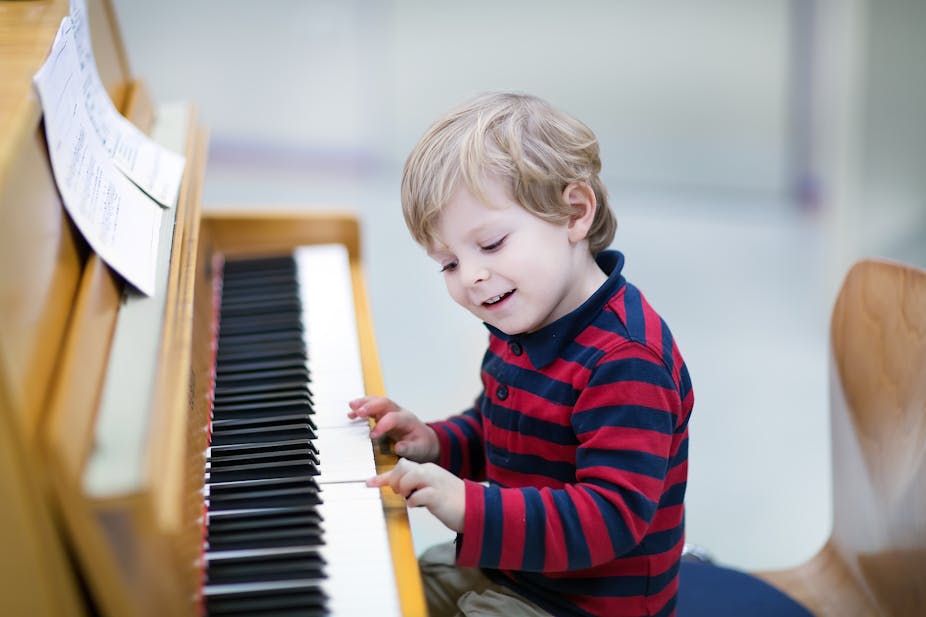School music is a big fish within the small pond of the Creative Arts curriculum. In lobbying for more space, music advocates often use an array of arguments – some backed by evidence, some not.
Many argue for the inherent value of “creativity” as a critical skill in contemporary society. Others rely on the somewhat disputed idea that studying music leads to benefits in maths, reading and writing. The Mozart Effect is probably the most famous example of these claims. Despite its appeal, it has not been substantiated in further studies.
But evidence in this area is hard to come by. Measuring the effects of a complex phenomenon in an uncontrolled environment like a school is extremely difficult. It is not surprising then that evidence for and against some claims exists simultaneously.
Nonetheless, there is good research out there that indicates some very strong reasons why space should be made for music amongst the high stakes tests and “curriculum priorities”.
Auditory cheesecake?
Evolutionary theorists have long struggled with explaining why music appears to be an essential part of all societies. Steven Pinker stands out as one of the few theorists that suggest music is useless, describing it as:
…auditory cheesecake, an exquisite confection crafted to tickle the sensitive spots of at least six of our mental faculties.
The majority argue that making music in communion with others fills a community-building void for which few other mechanisms exist in societies throughout time. Neuroscientists provide an explanation for this “music for bonding” theory, since shared music making triggers the release of a number of neurochemicals that promote the development of trust (oxytocin) and joy (endorphins).
So when we sing in a choir, drum in an African drumming circle, scream in a karaoke room, or play in a garage band, we connect chemically with others. It may well have been this positive feedback loop that motivated pre-evolutionary apes to keep trying when they experimented with banging trees simultaneously to communicate with family members far away who could hear the rhythms echoing through the trees.
Making connections
However, the most important argument in relation to schools is that making music with others doesn’t just strengthen existing networks, but it can also expand them by creating conditions where diverse groups of people can come together and transcend their differences, at least for a time. The rising popularity of community choirs is testament to the benefits of singing together, and there is vicarious pleasure to be taken from watching such musical phenomenon as professional flashmobs or the Choir of Hard Knocks.
These examples illustrate how active participation in music can help us to be more than we thought possible, both in the eyes of others and in our own expectations. It is this possibility that has yet to be fully utilised within the school system, where differences in ability and background abound and ways of coming together in bonding are rare.
Music has been used to good effect in responding to trauma in schools, with musical responses to tragic events such as the Black Saturday bushfires providing a forum to affirm resilience and identity in the face of adversity.
Musical bonding
Since belonging is critical to a young person’s capacity to learn in the school environment, schools are often looking for ways to foster connectedness between students and schools.
Participating in music with others is a powerful way of connecting with peers in the school beyond music class. The act of singing, drumming, or beat-boxing together not only triggers neurochemical release, but it creates conditions that transcend difference.
There is no need to agree with someone’s opinion in order to make music with her or him. Nor is a display of expertise required for this kind of participation, since we can all sing, we can all clap, and we can all dance, in one way of another.
The “cheese-cake” rewards that music offers are far from unnecessary indulgence. The experiences of pleasure and trust that are triggered when making music with others are precisely what school communities need. The aim is to get the right environment for children to learn – and there’s nothing wrong with having fun while they’re doing it.

